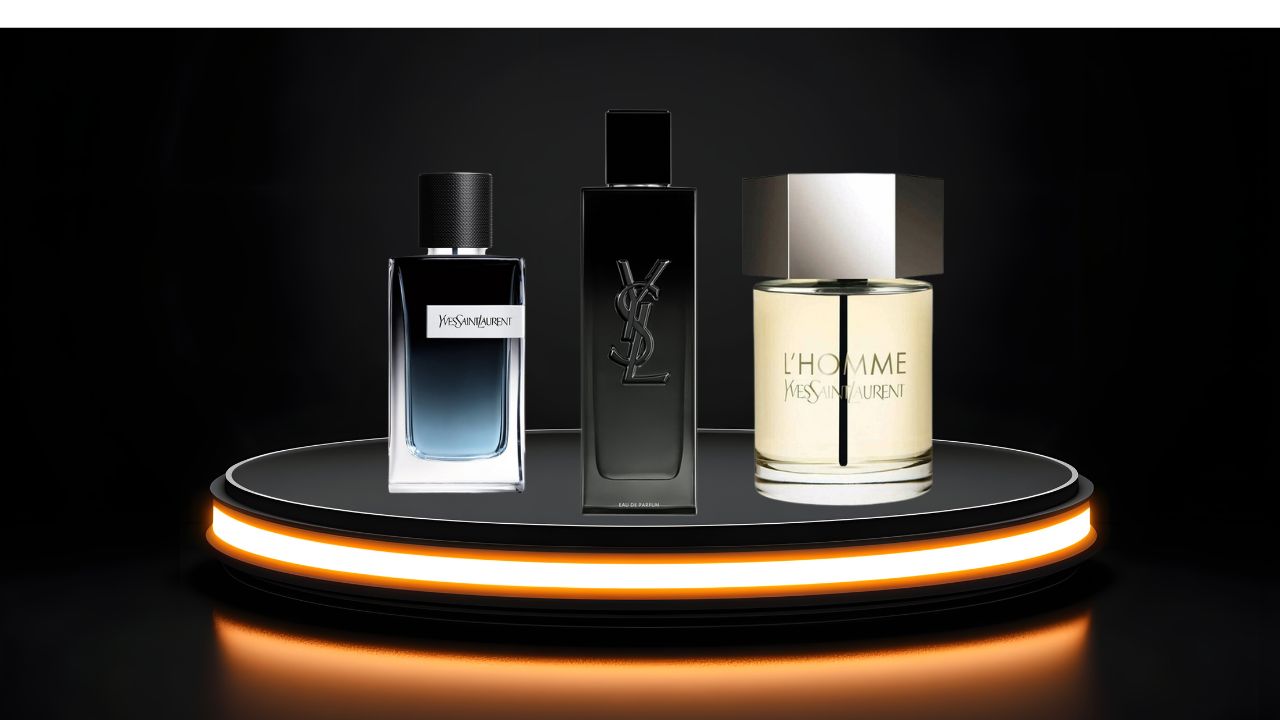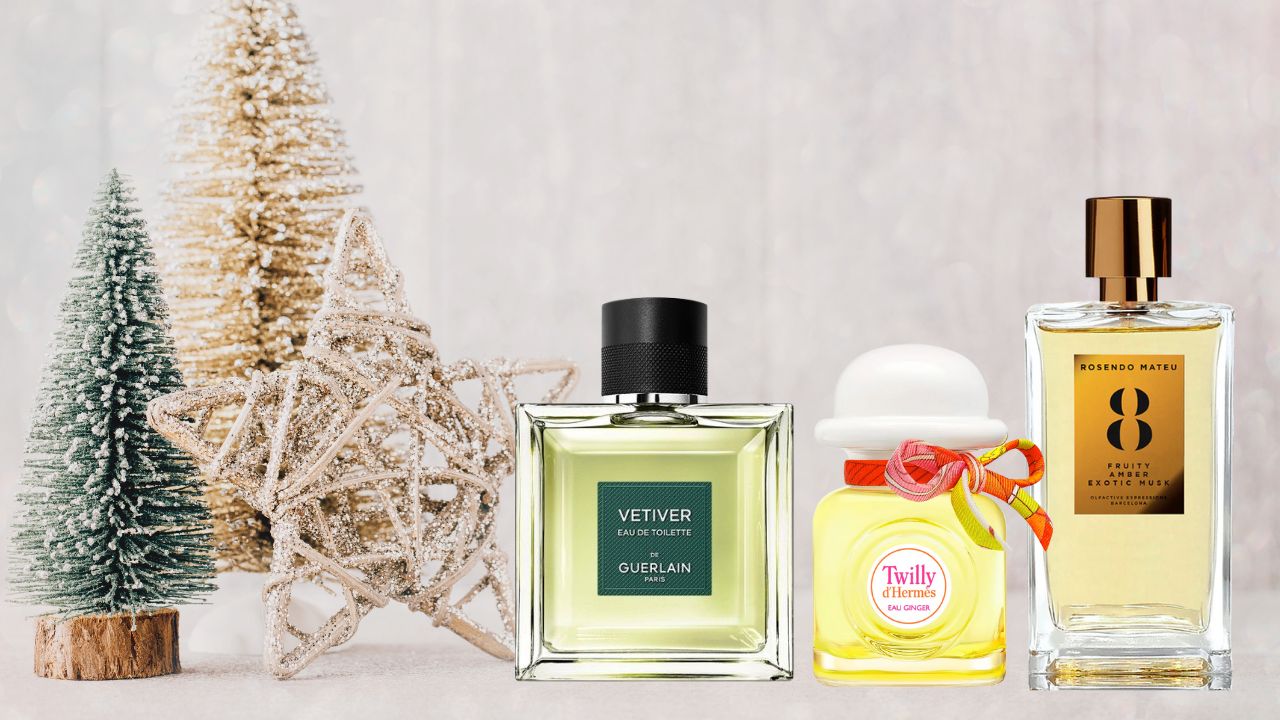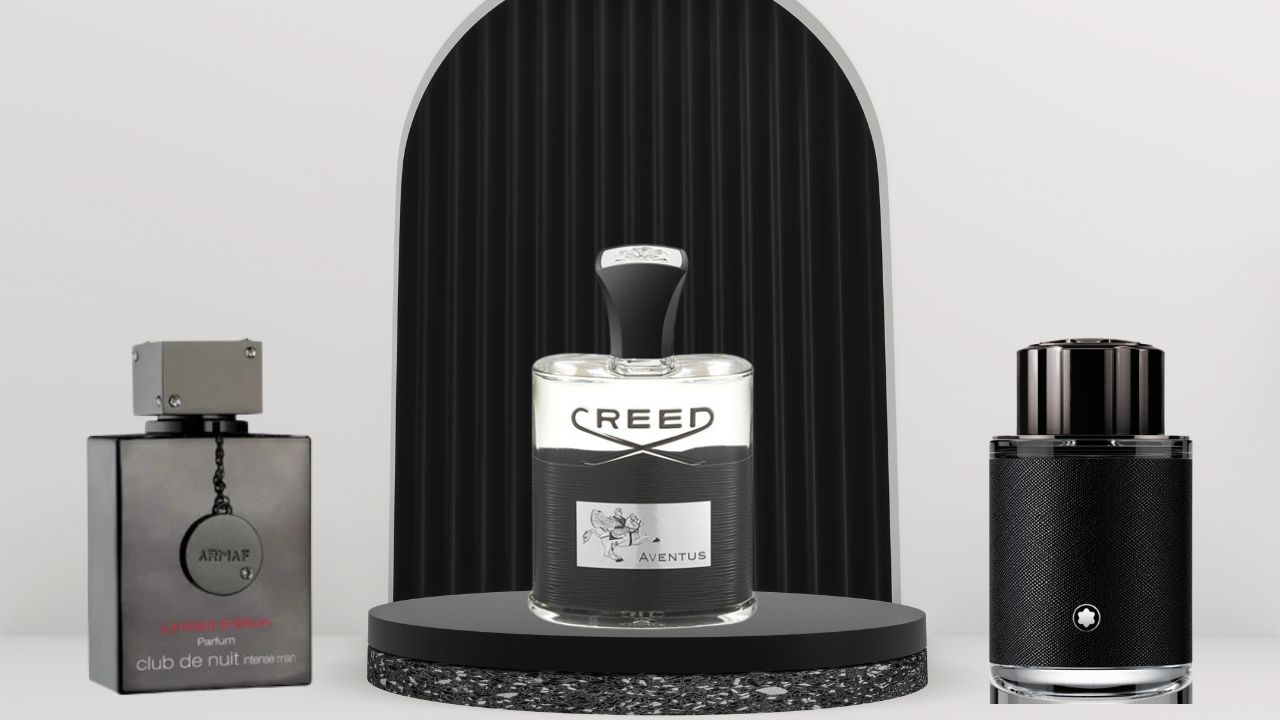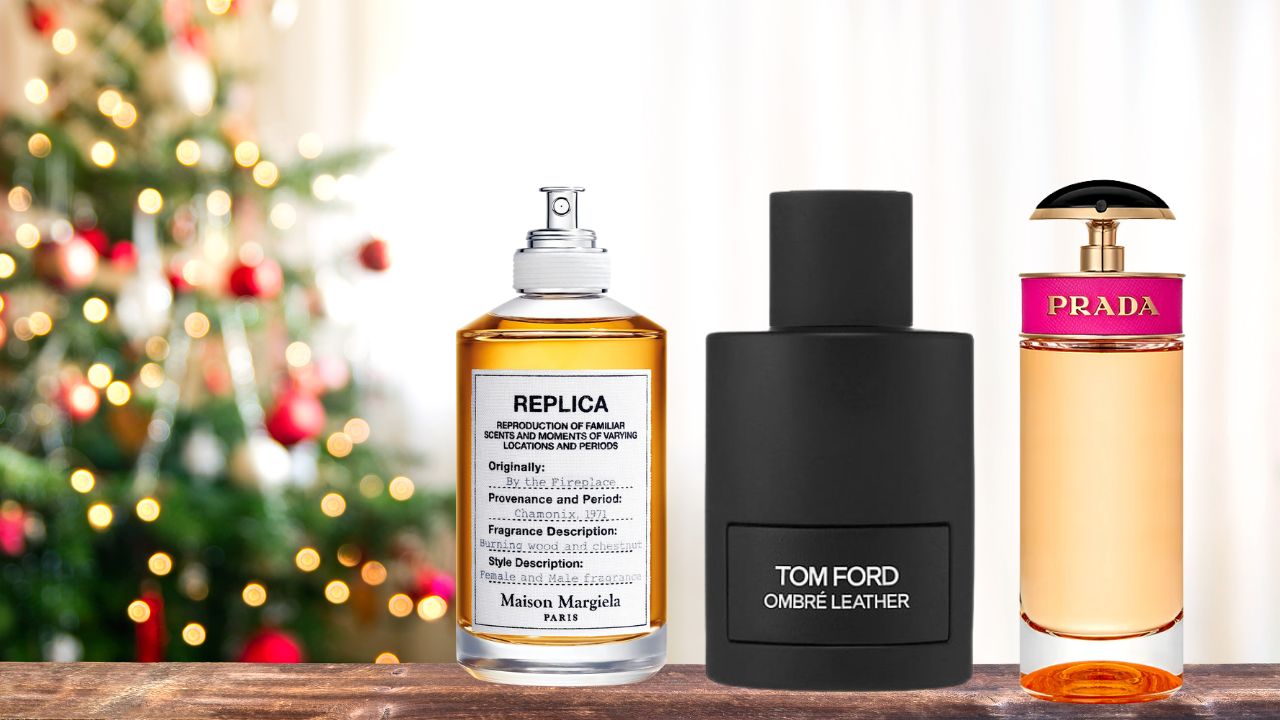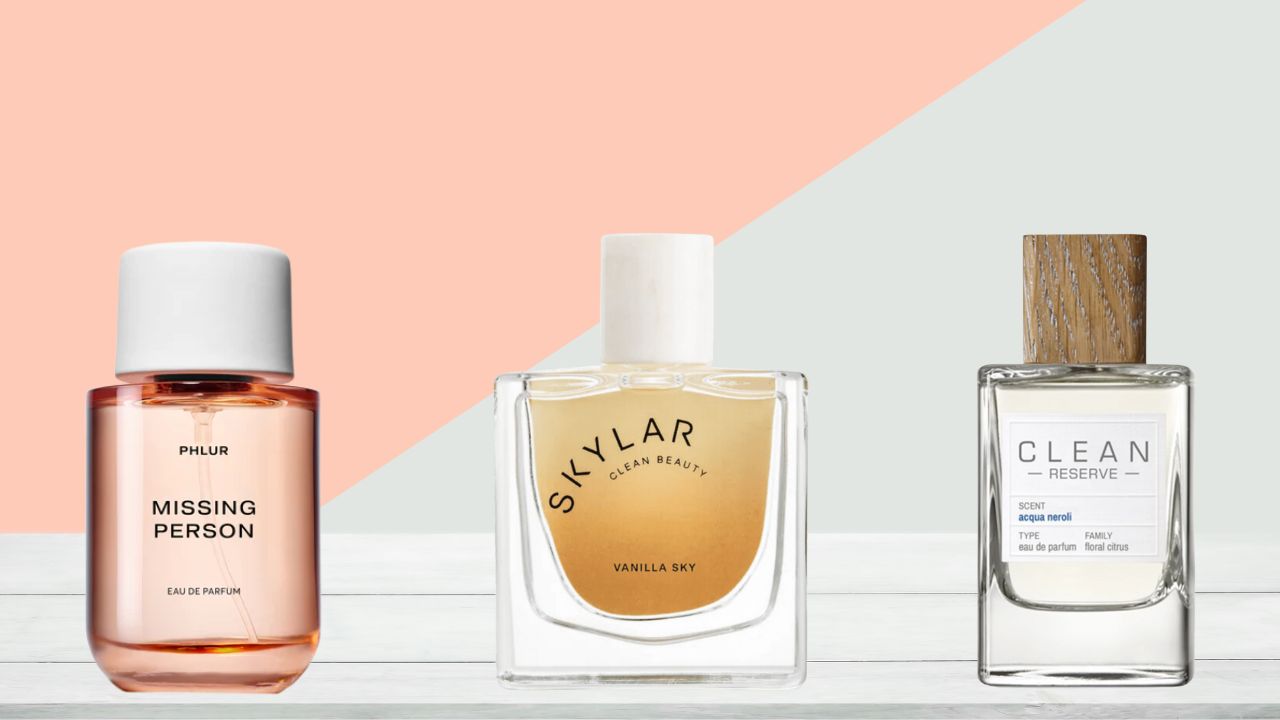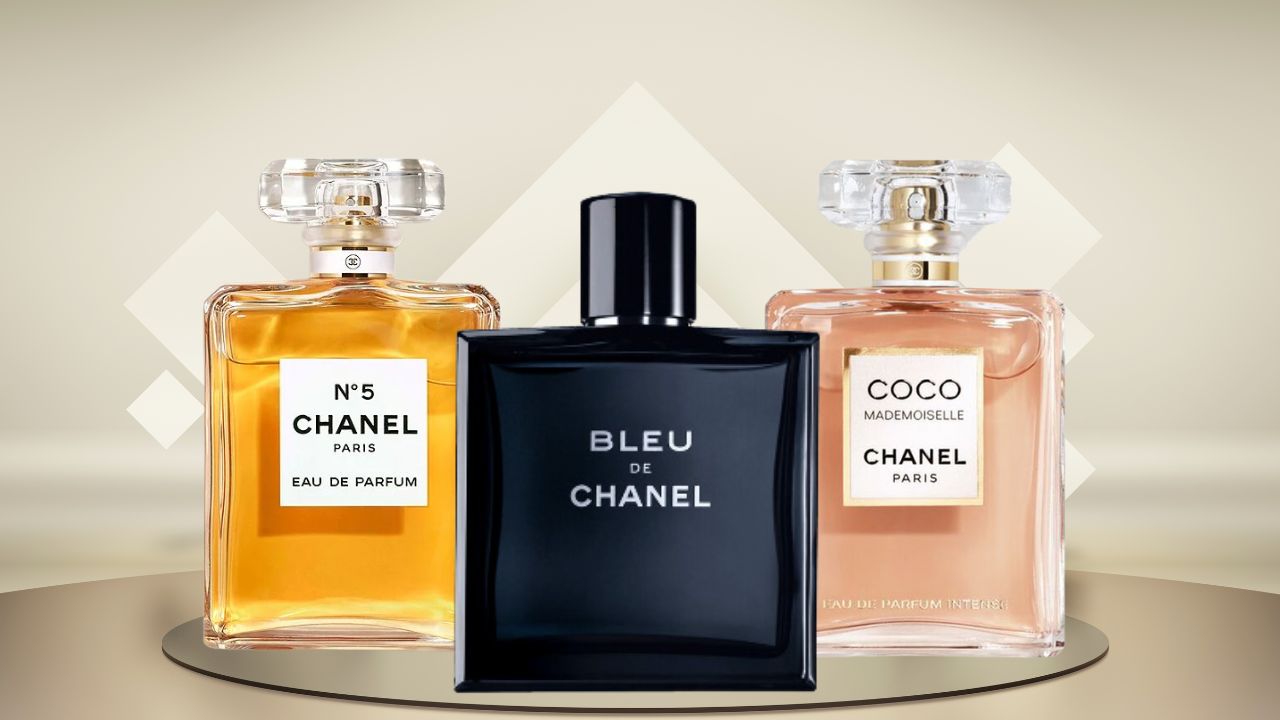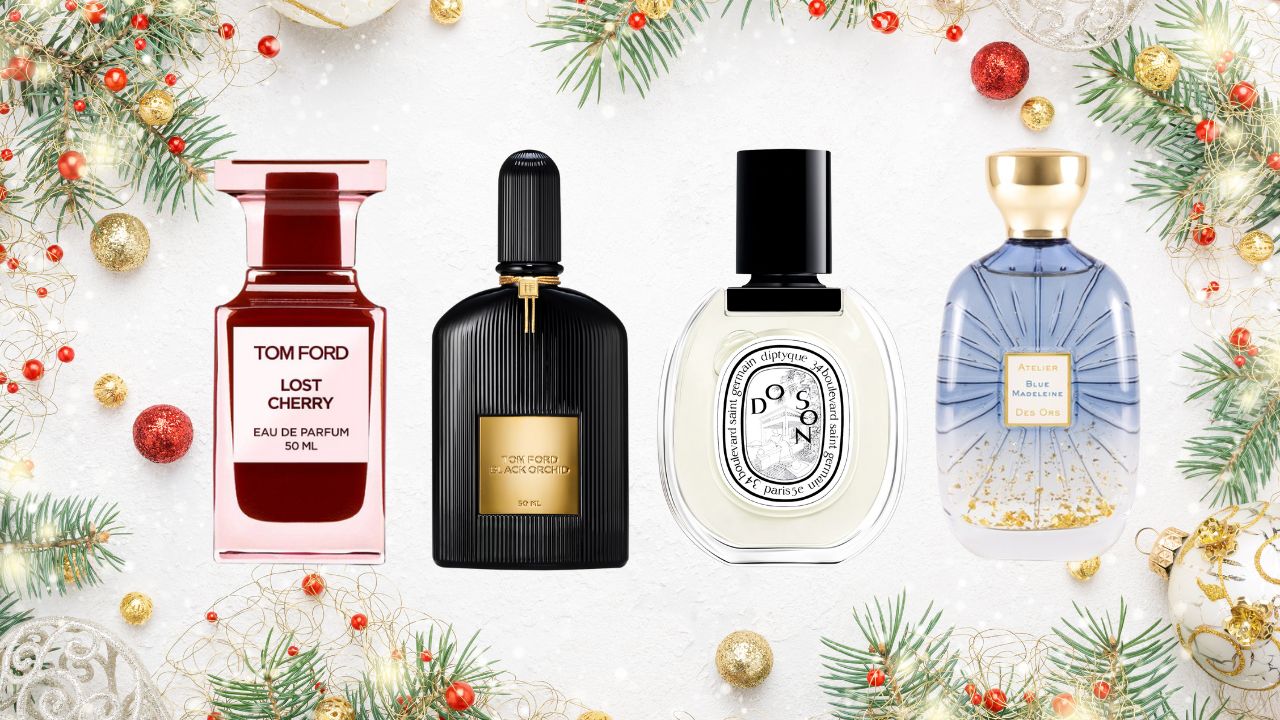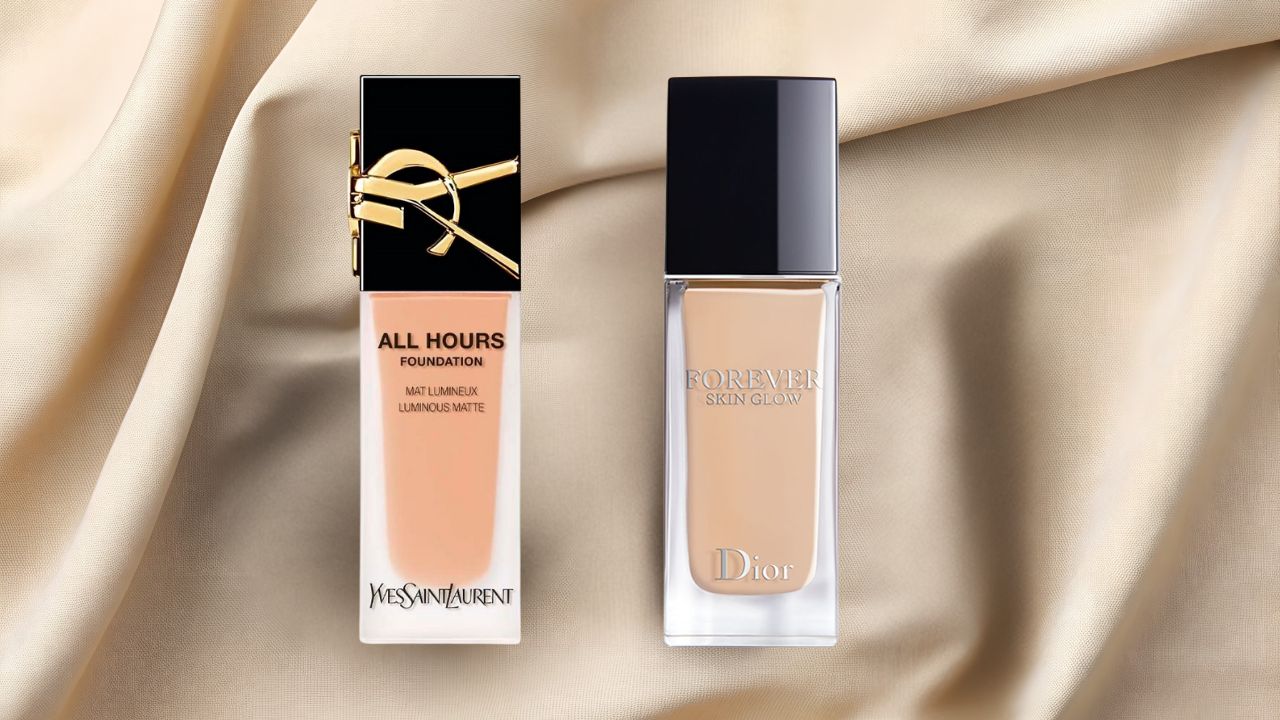Blog
Home / Beauty, Hair & Skin Care / How to Use Hair Oil for Soft, Shiny, and Healthy Hair: Tailored Tips for Every Hair Type
Categories
Recent Posts
- Best YSL Perfumes for Men in 2026: The Definitive Guide
- Affordable Christmas Perfume Gifts That Actually Feel Luxurious
- The Definitive Guide to Perfumes That Smell Like Creed Aventus: Luxury Scents Without the Luxury Price Tag
- Perfume Advent Calendars: 12 Days of Niche Scents
- Christmas Makeup Ideas: Your Guide to Festive Glamour That Actually Works
How to Use Hair Oil for Soft, Shiny, and Healthy Hair: Tailored Tips for Every Hair Type
0
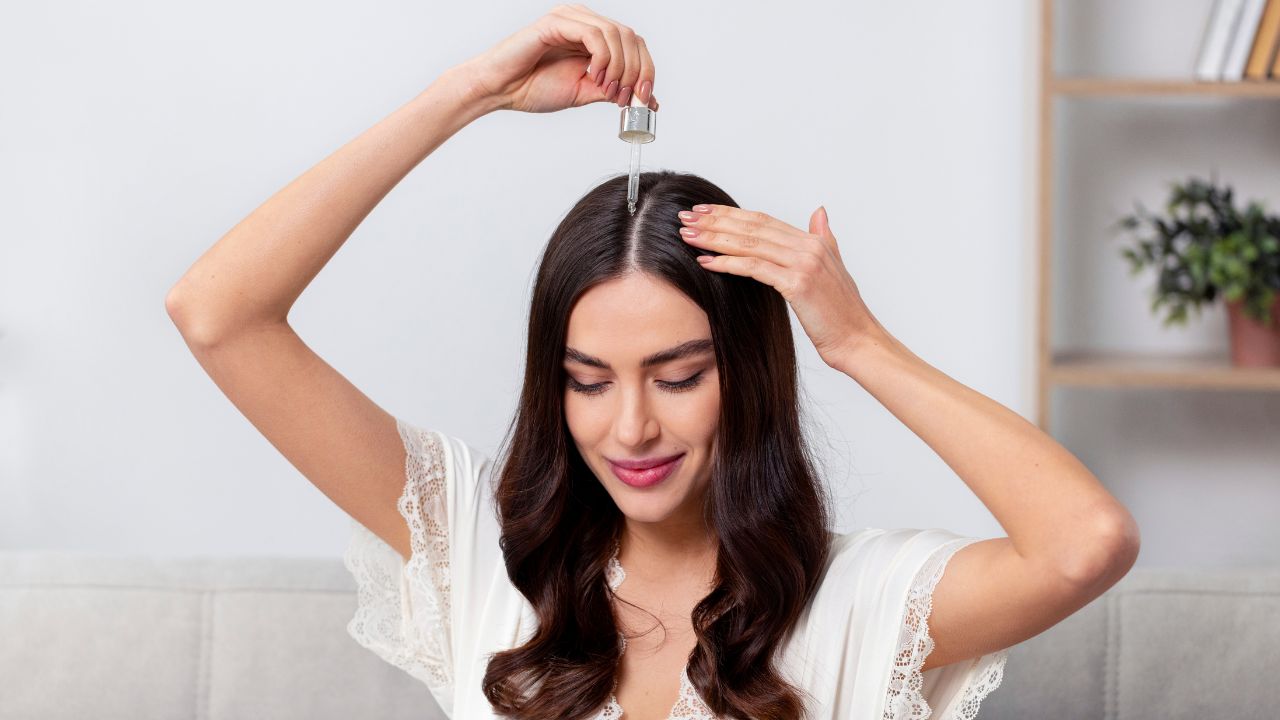
There’s nothing quite like that moment when your hair slips effortlessly through your fingers—smooth, soft, and full of life. That’s the magic of a good hair oil.
Once seen as an old-fashioned tradition passed down by grandmothers, hair oiling has made a major comeback—and for good reason. It’s one of the simplest yet most powerful ways to transform dull, brittle strands into hair that looks healthy, glossy, and strong from root to tip.
Today’s hair oils are anything but greasy or old-school. Formulated with lightweight, nutrient-rich ingredients, they target modern concerns like frizz, dryness, and heat damage without weighing your hair down. Whether your hair is oily, dry, curly, or color-treated, the right oiling routine can completely change how your hair feels and looks.
Ready to discover how this timeless beauty ritual can bring your hair back to life? Let’s break down how to use hair oil the right way—customized for your unique hair type and goals.
What Is Hair Oil? Understanding Its Profound Impact
Hair oil is far more than just a glossy serum you smoothly run through your ends before a special date night—it’s a centuries-old beauty essential specifically engineered to nourish, deeply protect, and inherently strengthen hair from root to every delicate tip.
Whether you’re channeling the timeless secrets of Ayurvedic rituals or indulging in contemporary blends infused with beneficial botanicals, hair oil is precisely designed to replenish what our strands continually lose from excessive heat, harsh chemicals, and pervasive environmental stressors.
At its fundamental core, hair oil represents a complex blend of fatty acids, vital vitamins, and potent antioxidants that cleverly mimic the natural oils (sebum) our scalp organically produces. While our scalp works diligently to maintain balance, various factors like increasing age, individual hair type, routine styling habits, and even climate can significantly disrupt its equilibrium—enter: hair oil to the immediate rescue.
These remarkable oils function as emollients, filling in gaps in the hair’s outer cuticle, and occlusives, forming a protective barrier to seal in moisture, while some even act as penetrants, reaching deeper into the hair shaft.
Choosing the Right Hair Oil: Tailoring for Your Unique Hair Type
Not all hair oils are created equal, and what works genuine wonders for your best friend’s distinct curls might regrettably weigh your own strands down like a wet sponge. That’s why selecting the perfect oil based on your unique hair type is absolutely crucial for optimal results. Let’s systematically break down the finest choices.
How to Use Hair Oil For Dry Hair: Quenching Thirsty Strands
Dry hair is perpetually thirsty—it noticeably lacks moisture and is often prone to significant frizz, a dull appearance, and distressing breakage. It demands consistent, profound hydration.
Best Oils:
- Coconut Oil: Known for its small molecular structure, it is remarkably penetrating and intensely hydrating, reaching deep into the hair shaft to reduce protein loss.
- Avocado Oil: Rich in essential vitamins A, E, and D, it’s ideal for brittle strands, providing profound nourishment and aiding elasticity.
- Argan Oil: A lightweight, non-greasy oil packed with protective antioxidants, it adds a gorgeous, healthy gloss and provides remarkable softness without residue.
Step-by-Step Application:
- Gently warm 2–3 generous tablespoons of your chosen oil until it is pleasantly warm (never hot).
- Divide dry, unwashed hair into manageable sections.
- Massage the warmed oil into your scalp with smooth circular motions for 5-10 minutes to stimulate beneficial blood flow and aid absorption.
- Work the oil thoroughly through the entire lengths of your hair, paying special attention to fully coat the often-driest ends.
- Wrap your hair in a warm towel or secure it with a shower cap to create a mild steamy environment for deeper penetration.
- Leave it on overnight for maximum benefit or for at least 1–2 hours if time is limited.
- Rinse with lukewarm water and follow with a sulfate-free shampoo, perhaps doing a double cleanse to remove all residue.
Pro Tips:
- How Often to Use: 2 to 3 times weekly for intense hydration and repair.
- Add a single drop of an essential oil like lavender (diluted in your carrier oil) for added relaxation and scalp health benefits.
- Never forget your ends—they’re the most vulnerable part of dry hair!
How to Use Hair Oil For Oily Hair: Balancing Sebum Production
Oily hair tends to become greasy quickly, but that doesn’t mean you should skip oiling entirely. You just need to be smart and precise about its application. The goal is to regulate sebum production, not stimulate it further.
Best Oils:
- Jojoba Oil: This unique oil closely mimics your scalp’s natural sebum, helping to balance oil production and prevent your scalp from overcompensating.
- Grapeseed Oil: An exceptionally light, quick-absorbing, and completely non-greasy oil, perfect for delivering nutrients without adding heaviness.
- Tea Tree Oil (diluted): Known for its powerful antimicrobial properties, it’s great for scalp detoxification and managing dandruff, but must always be diluted in a carrier oil.
Step-by-Step Application:
- Use only 1 teaspoon of oil and concentrate its application precisely on the scalp. A dropper bottle can be very useful here.
- Massage gently for just 3–5 minutes to stimulate beneficial blood flow without over-stimulating oil glands.
- Leave it on for a maximum of 30 minutes. Leaving it longer can risk clogging pores and making oiliness worse.
- Rinse thoroughly with a mild, clarifying shampoo to remove all product and excess oil.
Pro Tips:
- How Often to Use: Once a week to avoid undesirable build-up.
- Never leave oil on overnight for oily hair—it can lead to scalp congestion and exacerbate oiliness.
- Combine jojoba with a few drops of diluted tea tree oil for a soothing, balancing combination, especially if you experience scalp issues.
How to Use Hair Oil For Normal Hair: Maintenance and Shine
Normal hair is the enviable middle child—balanced, not excessively oily or dry, and generally quite low maintenance. The goal here is preventative care, enhanced shine, and continued vitality.
Best Oils:
- Sweet Almond Oil: A nourishing and lightweight oil that provides softness without weighing hair down.
- Olive Oil: A classic choice for imparting excellent shine and remarkable softness, rich in protective antioxidants.
- Sesame Oil: Great for enhancing natural thickness and brilliant shine, also possessing protective qualities against environmental damage.
Step-by-Step Application:
- Warm 1–2 tablespoons of oil to a pleasant temperature.
- Apply evenly to both the scalp and the hair lengths.
- Massage with your fingertips for about 5-7 minutes to improve absorption and stimulate the scalp.
- Leave it on for 1–2 hours or overnight for truly deeper conditioning if desired.
- Wash off thoroughly with a gentle shampoo, ensuring no residue remains.
Pro Tips:
- How Often to Use: Once a week for essential maintenance and enhanced luster.
- Pair your oiling session with a scalp massager or a wide-tooth comb to improve circulation and evenly distribute the product.
- Consider using a tiny amount as a leave-in conditioner on damp ends for added softness and frizz control, especially after washing.
How to Use Hair Oil For Mixed Hair: Targeted Balance
Mixed hair often presents a unique challenge: an oily scalp combined with dry, frizzy, or brittle ends. It’s all about precise balance and targeted application to address both concerns.
Best Oils:
- For the Scalp: Jojoba or Grapeseed Oil (light, non-comedogenic, balancing).
- For the Ends: Castor Oil or Coconut Oil (rich, highly nourishing, excellent for repair).
Step-by-Step Application:
- Apply a light oil (like jojoba) solely to your scalp using a dropper for precise control, and massage gently for 5 minutes.
- Then, use a heavier, richer oil (like castor or coconut) exclusively on your mid-lengths and parched ends.
- Crucially, avoid oversaturating the scalp with the heavier oil to prevent greasiness.
- Allow the oils to sit for 1–2 hours or overnight (only if your scalp isn’t extremely oily, otherwise stick to a shorter duration).
- Rinse thoroughly using a balancing shampoo that addresses both oily roots and dry ends.
Pro Tips:
- How Often to Use: Once a week is usually perfect for this balanced regimen, but you can target your dry ends more frequently with a tiny amount if needed.
- Use a dropper for precise scalp application, ensuring you only apply to the root area.
- Try multi-masking: apply one type of oil specifically for your scalp and a completely different type for your parched ends, tailoring the treatment.
Common Mistakes to Avoid While Oiling Hair: Ensuring Optimal Results
Even the best oils can’t save you from rookie mistakes. Watch out for these common pitfalls to maximize your hair oiling benefits:
- Skipping the Shampoo: Always rinse thoroughly with shampoo to remove all oil residue. Leaving oil on can attract dirt, lead to product build-up, and make your hair look dull and heavy.
- Over-Oiling: More oil does not equal more benefits. You’ll just end up with excessively greasy hair, potentially clogged scalp pores, and a difficult wash day. Use only the recommended small amounts.
- Using Cold Oil: Oil at room temperature or slightly warmed penetrates the hair strands and scalp much more effectively. Cold oil can sit on the surface, making it less potent.
- Aggressive Scalp Scrubbing: Gentle application is key. Aggressive rubbing can cause unnecessary friction, leading to breakage and irritation of the delicate scalp skin. Use soft, circular motions.
- Leaving Oil on Too Long: While dry hair can benefit from overnight oiling, leaving oil on too long, particularly with oily hair, can lead to undesirable scalp build-up and even block hair follicles. Adhere to the recommended timings.
Beyond Hair Type: Advanced Considerations for Optimal Oiling
While hair type is a primary guide, other factors significantly influence your optimal oiling routine:
Hair Porosity: How Your Hair Absorbs Moisture
Hair porosity refers to your hair’s ability to absorb and retain moisture.
High Porosity Hair
Has open cuticles, easily absorbs but quickly loses moisture.
Best Oils: Heavier, more occlusive oils like coconut oil, olive oil, or castor oil work well to seal in moisture.
Low Porosity Hair
Has tightly closed cuticles, resists moisture absorption.
Best Oils: Lighter, penetrating oils like jojoba oil, grapeseed oil, or argan oil are preferred, as heavier oils can just sit on the surface. Apply a small amount to damp hair.
Hair Texture: Fine, Medium, or Coarse
- Fine Hair: Easily weighed down. Use minimal amounts of lightweight oils like grapeseed or jojoba. Focus on ends.
- Medium Hair: More versatile. Can generally handle medium-weight oils like sweet almond or argan.
- Coarse Hair: Often needs more moisture. Can benefit from richer, heavier oils like coconut, olive, or castor.
Addressing Specific Scalp Concerns
- Dandruff/Itchy Scalp: Diluted tea tree oil or rosemary oil (with a carrier) can offer soothing, antimicrobial benefits.
- Dry, Itchy Scalp: Jojoba or argan oil can provide comfort and balance moisture.
Hair Concerns: Damage & Frizz
- Damaged/Brittle Hair: Oils like argan, avocado, or castor oil can help strengthen and repair strands due to their nourishing fatty acids.
- Frizz Control: A tiny amount of argan or almond oil applied to damp or dry hair can smooth the cuticle and reduce frizz.
Restore Shine and Strength to Every Strand
Healthy hair starts with nourishment, not endless styling or expensive treatments. With the right oiling routine, you can repair damage, seal in moisture, and bring back your hair’s natural softness and shine. The secret lies in choosing oils that match your hair type and using them consistently to strengthen strands from root to tip.
By focusing on deep hydration, scalp health, and protective ingredients, you’ll start to notice smoother texture, less frizz, and stronger, more resilient hair over time. From nutrient-rich formulas like argan and coconut oil to lightweight blends with jojoba or grapeseed, every drop contributes to restoring balance and vitality. Your hair deserves care that works with it, not against it—nourish it from the roots for a naturally radiant finish.
Discover the best dermatologist-approved hair oils at Beautinow — a curated collection designed to hydrate, protect, and transform your hair.
Why Choose Beautinow for Your Haircare Essentials:
Guaranteed Authenticity: Every product is sourced from verified distributors to ensure freshness, safety, and genuine quality.
Expertly Curated Selection: Our range features premium, clinically backed oils formulated to restore shine, reduce frizz, and strengthen all hair types.
Complete Haircare Range: From lightweight leave-in oils to intensive overnight repair treatments, find everything you need to build a balanced routine.
Fresh Stock Promise: We maintain optimal storage and frequent restocks so every formula performs at its peak.
Trusted Guidance: Get detailed ingredient insights, expert recommendations, and product advice tailored to your unique hair concerns.
Healthy, lustrous hair doesn’t happen overnight—it’s the result of consistent care, patience, and the right ingredients. Keep your oiling routine simple yet effective, treat it as your weekly self-care ritual, and let your hair rediscover its natural beauty and resilience with every use.
Frequently Asked Questions
Q: Do you put hair oil on wet or dry hair?
A: It depends on your goal. If you’re oiling for deep nourishment or scalp treatment, apply oil to dry hair before shampooing — this allows the oil to penetrate better and protect your strands during washing. For shine and frizz control, apply a few drops of lightweight oil on damp or towel-dried hair after showering. This locks in moisture, smooths flyaways, and adds a healthy gloss without feeling greasy.
Q: When should I apply hair oil?
A: The best time to apply hair oil is before washing your hair as a pre-shampoo treatment. Massage it into your scalp and work it through the lengths at least one hour before cleansing, or leave it overnight for deeper hydration if your scalp isn’t oily. You can also use a small amount of hair oil post-wash on damp hair for styling, protection, and extra shine. Regular weekly oiling — one to three times, depending on your hair type — keeps your hair healthy and manageable.
Q: Are you supposed to wash out hair oil or leave it in?
A: For traditional hair oiling treatments, you should always wash it out. Leaving heavy oils on the scalp for too long can clog pores and attract dirt, leading to buildup or irritation. However, if you’re using a leave-in hair oil (lightweight and silicone-free), a few drops can be left on the ends after styling to seal split ends and add shine. Always check the product label — treatment oils are meant to be rinsed, while finishing oils are designed to stay in.
Related posts
Best YSL Perfumes for Men in 2026: The Definitive Guide
In the hushed corners of Parisian perfumeries, where light filters through crystal bottles and conversation turns to notes of vetiver a...
Affordable Christmas Perfume Gifts That Actually Feel Luxurious
There's something inherently intimate about gifting fragrance—it's a gesture that says you've paid attention, that you understand someo...
The Definitive Guide to Perfumes That Smell Like Creed Aventus: Luxury Scents Without the Luxury Price Tag
There's a certain magnetism to walking into a room wearing the right fragrance. It's not loud, it's not desperate—it's simply there, co...
Perfume Advent Calendars: 12 Days of Niche Scents
There's something quietly revolutionary happening in the world of fragrance, and it arrives in December wrapped in numbered boxes. Forg...
Christmas Makeup Ideas: Your Guide to Festive Glamour That Actually Works
Picture this: You're getting ready for the season's most anticipated gathering, and you're faced with the same tired holiday makeup dil...
Perfumes That Smell Like Christmas: Your Guide to Festive Fragrance Magic
There's something almost alchemical about the way certain fragrances can transport you instantly to a snow-dusted evening in December, ...
Perfume for Sensitive Skin That Won’t Cause Allergies: The Essential Guide to Scent Without Irritation
There's a particular kind of disappointment that comes with finding a fragrance you love, only to discover hours later that your skin h...
10 of the Classic Perfumes That Never Go Out of Style: The Timeless Fragrances That Define Elegance
In the hushed elegance of a Parisian boutique, where crystal flacons catch the afternoon light like precious jewels, something remarkab...
Perfumes with the Most Beautiful Bottles: Where Art Meets Olfactory Excellence
In a world where first impressions are everything, the bottle sitting on your vanity speaks volumes before you've even spritzed a singl...
10 Best Chanel Perfumes: Timeless Elegance in Every Bottle
In the world of luxury fragrance, few names command the reverence and recognition that Chanel does. Picture this: it's 1921, and Gabrie...
The 10 Best Women’s Perfumes for Xmas Gifts: Luxury Fragrance Gift Guide 2025
Choosing the perfect women's perfume for Xmas gifts requires more than walking into a store and picking the prettiest bottle. The right...
Dior Foundation vs YSL Foundation: The Ultimate 2025 Comparison Guide
Standing in front of the luxury foundation counter, you're faced with a decision that's both exciting and overwhelming. Two beautiful b...
Comments


